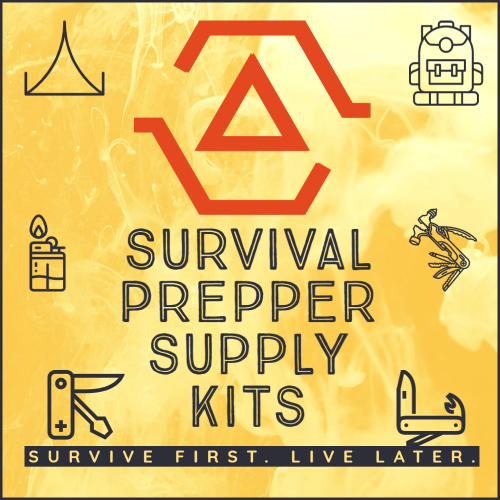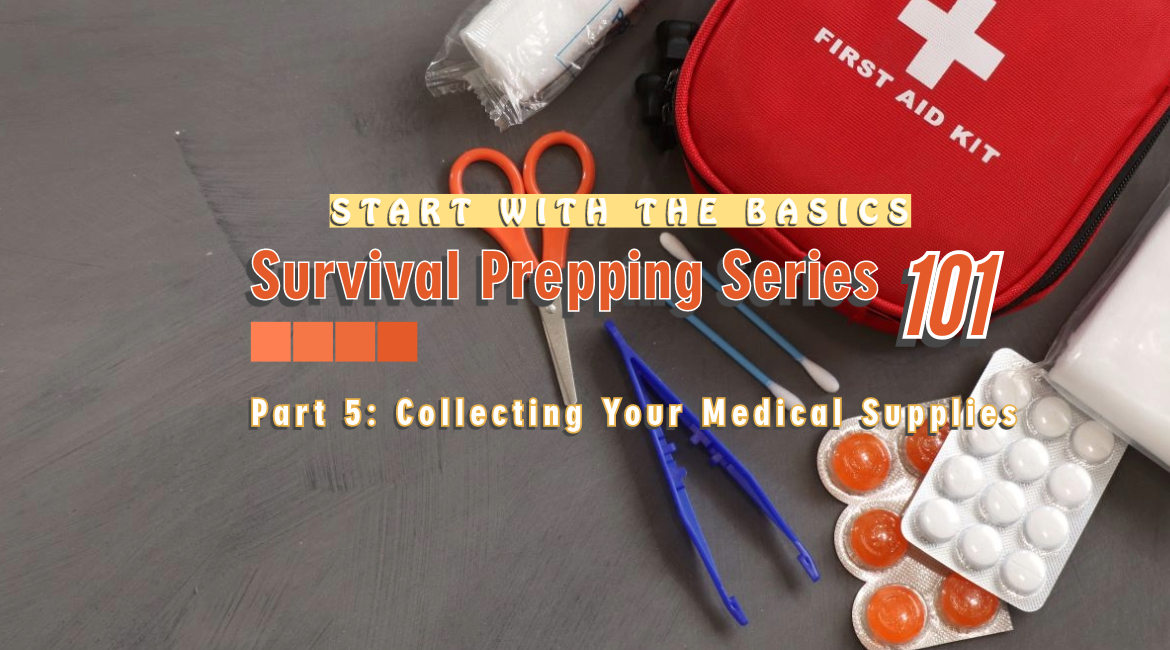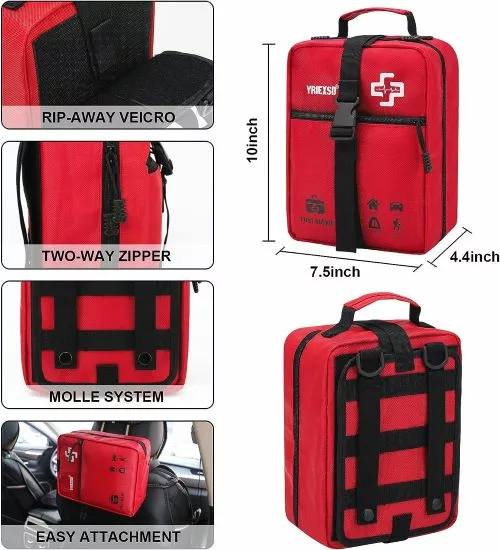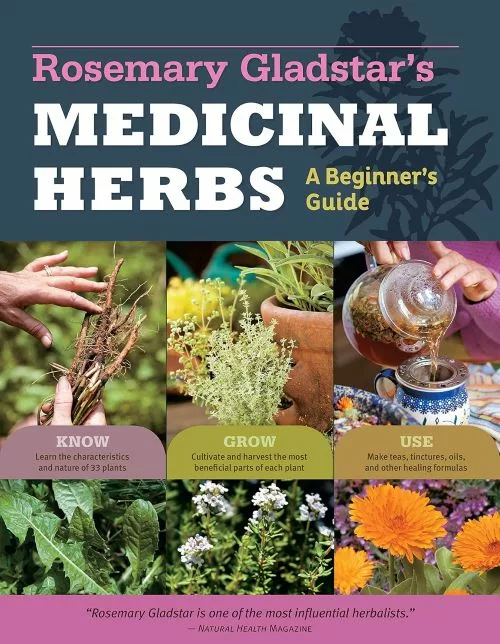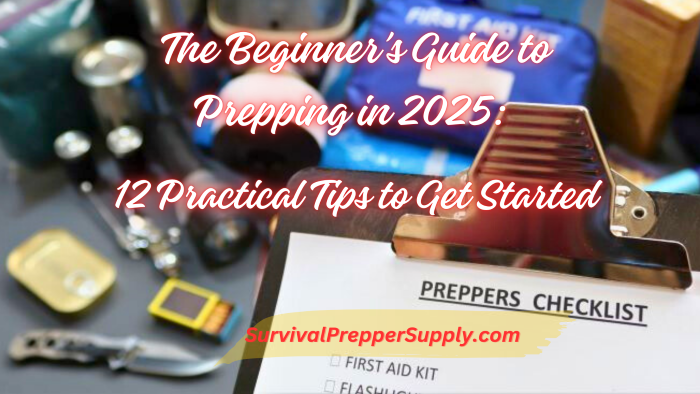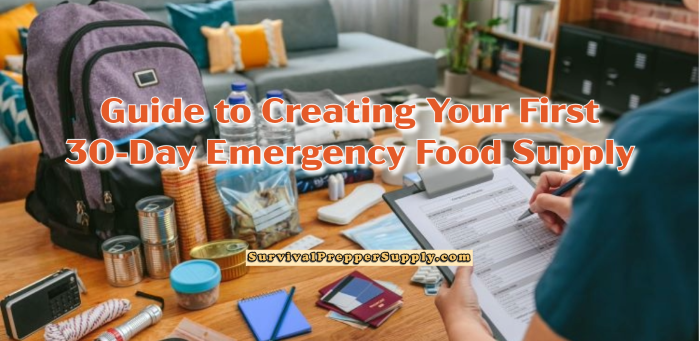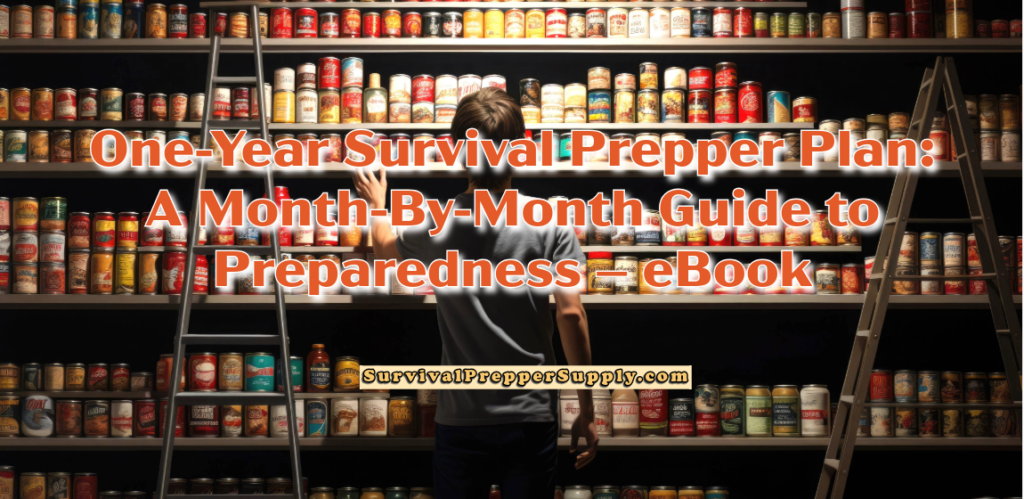Basics on Collecting Supplies for First Aid, Part 5
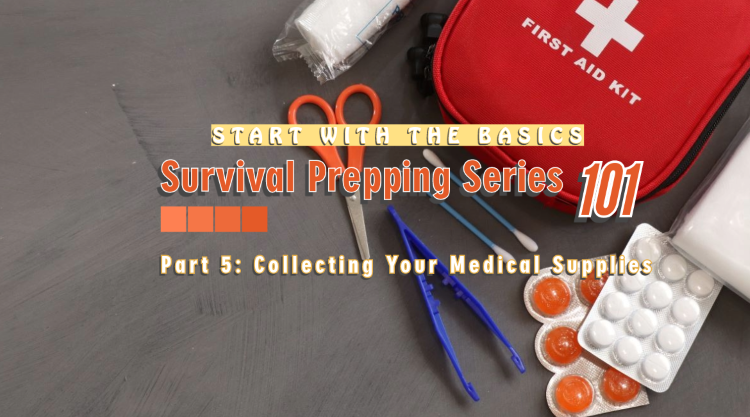
Surprisingly, when preparing for an impending survival scenario, many individuals neglect to consider the necessary medical supplies. They become overly preoccupied with food, water, and finding suitable shelter.
Do you realize that …
a minor injury could pose a severe problem without the proper survival prepping equipment?
Your medicine cabinet probably doesn’t have everything you’ll need. It’s common to have over-the-counter medications like pain relievers, bandages, and remedies for things like indigestion or acid reflux.
Please note that this post contains affiliate links, meaning I will get a small commission for qualifying purchases at no extra cost to the buyer.
Related – Bushcraft – Part 4 First Aid for Survival
But you may need more – like supplies to create a splint for a strain or a tourniquet. If anyone in your family is on prescription medication, you’ll need backup supplies for that or even holistic supplements in case you cannot get prescriptions any longer.
Be strategic with how you store them, too. Any water damage could ruin bandages and gauze or tape. Consider that you may not have access to a doctor, hospital, or pharmacy, and prepare based on what you can do yourself.
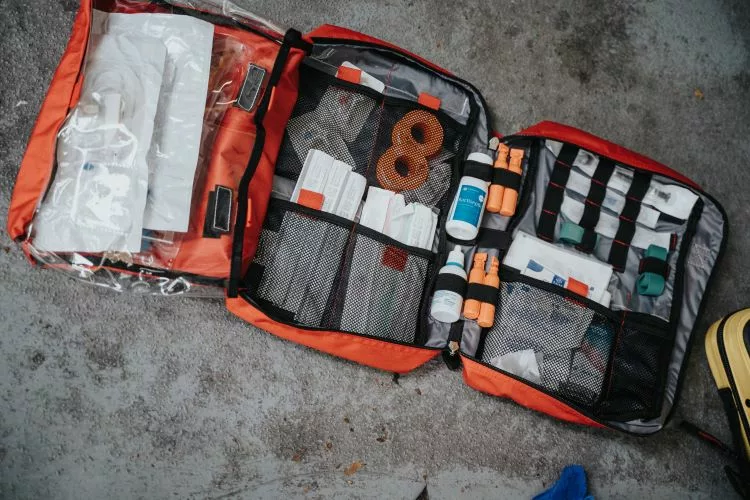
As an older person/survivalist type, I have a lot of necessary prescriptions and vitamins/supplements that I would be hard-pressed to go without. I did order fish antibiotics from Heartland Veterinary to have on hand for survival. They come in bottles of 100, and I got 2 – cipro and cephalexin, so I’ll have plenty!
Teri
Purchasing a Starter First Aid Kit
If you’re starting on your survivalist path, starting with prepackaged kits with everything you need is a good idea. These make excellent beginning points for beginners and are easy to use.
Related – What You Need for Your Survival Prepper Bugout Bag
The issue is that these prepackaged kits aren’t intended for life-threatening circumstances. They’re designed for minor accidents at home, during camping trips or hikes, when you can easily seek immediate medical attention. You need to use these kits as a starting point and add to them.
The first aid kit will contain both small and larger components. A small one is designed for minor injuries, such as cuts, scratches, etc. It may consist of antiseptic wipes, rubbing alcohol swabs, a cooling pack, an antibiotic cream, various sizes of bandages, wraps, and other supplies.
Read this – OTC Meds In Your Backyard: 10 Plant Alternatives
There are first-aid kits that contain significantly more than the basic models and those that come with additional features. Some contain as many as 400 pieces, while others feature water-resistant containers.
400 Piece Large First Aid Kit Premium Emergency Kits
ESSENTIALS FOR EMERGENCY – This kit contains 400 first-aid supplies for emergencies. Use the essentials from the emergency bag to care for minor scrapes, burns, wounds, etc. The kit includes adhesive bandages, a tourniquet, bandages, an emergency blanket, a burn gel pack, a first aid guide, etc.
PORTABLE DESIGN – This VRIEXSD first aid kit is designed to carry it to prepare for emergencies easily. The compact size of 9.43x6.8 inches and weighs only 2.64 pounds. It can be hung on your backpack or stored in your cars, trucks, jeep, or other places in an emergency.
This is an Amazon’s Choice item. Great price!
There are also tiny first aid kits that include a survival mylar blanket for emergencies where you may need to be evacuated and require immediate assistance.
Small First Aid Kit, 150 Pieces with Foil Blanket, Scissors First Aid Bag
This is a waterproof first aid kit bag that is 7.87×5.71×1.97 inches. It is easy and lightweight for you to carry with 150 pieces of essentials. You can refill it when needed.
This first aid kit has almost all the emergency supplies you need. It applies to various injuries, so you can immediately turn to our first aid kit when handling unexpected moments.
Also, check out this Mini First Aid Kit, 100 Pieces Water-Resistant with a Hard Shell and Small Case
Supplementing What’s in Readymade Kits
When you buy your first aid kit in the beginning, make a list of what it includes. Don’t just write “bandages,” though. Write down the size and amount that are included. Then, make a list of what you want to have on hand in your survival supplies.
If your first aid kit doesn’t include any aspirin or medical tape, you can start a list of things to buy. Or, if it has four bandages, you don’t have to re-purchase a whole new kit but buy the items within it that you want more stock of, like gauze or medical tape.
A perfect kit to purchase is the Survival First Aid Kit/Medical Pouch which has MOLLE straps and contains 282 pieces. This kit includes survival tools included in the kit, such as the tactical flashlight, pen, survival bracelet, knife, multitool card, fire starter, emergency blanket, 12-hour glow stick, and emergency rain poncho, as well as first aid medical supplies. A killer deal and price! I bought 2.
You may have other tools you want to get for survival first aid supplies. These may include things like a tourniquet or a skin stapler, so more extreme survival injuries need addressing.
You may need an Emergency Trauma Kit that includes a tourniquet, splint, and military combat tactical ready.
First aid usually reflects an injury, but it can be something where you’re tending to ongoing medical needs. When you’re in a survival situation, you may be unable to call the doctor and get a prescription. You’ll want things to help stave off illnesses, like Vitamin C supplements and multivitamins.
Buy/read this book! – 57 Scientifically-Proven Survival Foods to Stockpile: How to Maximize Your Health With Everyday Shelf-Stable Grocery Store Foods, Bulk Foods, And Superfoods
You must consider what may happen in a survival event that could spiral out of control quickly. For example, an allergic reaction without having antihistamines on hand could be dangerous.
A simple diarrhea issue could cause severe dehydration, so you would need medication to treat this issue. Nausea might be an issue, depending on the person and situation, so you want items to treat that, too. (This is me.)
Some people prefer liquid bandages over normal gauze-type bandages because they’re more durable and convenient than a Band-Aid bandage. It also works well on pets, too.
Personalizing First Aid Supplies for Your Family
Not only do you want to have an abundance of ordinary supplies on hand for first aid purposes, but you also want to personalize your supplies to match the needs of everyone in your family.
Even something as simple as having antacids in storage for a loved one who suffers from heartburn will be a welcomed purchase. You can have them in the main supplies, but you can also assemble individualized supply kits for each person, which could then be packed in their bug-out bag.
When planning for personalized first aid supplies, think about each person’s medical needs – whether they’re diabetic, elderly, children, etc. That may require you to invest in a variety of first aid products.
Pediatric medication or electrolytes to replenish hydration can differ from adult use. You must consider your pets and what first aid items they may need.
Keeping First Aid Supplies Safe for Use
Make sure you keep all of your supplies safe and organized. Safety means the items contained within aren’t contaminated. For example, you don’t want your first aid kit floating in stagnant water during a flood because it wasn’t properly sealed or in a dry location.
But you also have to maintain safety in other ways. Every item should be marked. You want to make sure you can read dosage and expiration information. If possible, keep inventory over what you have.
Rotate supplies like ibuprofen or anything with an expiration date so you’re not holding on to old medications. You may also want to print and laminate any medical records and important health information and keep it handy with your first aid supplies.
Long-Term First Aid Plans When Supplies Run Out
If you’re ever in a long-term survival event, you could eventually find yourself out of supplies. So you have to plan for that day even if it never happens. Herbal remedies will come in handy and help with everything from nausea to headaches.
You can use certain leaves for antiseptics or help with burns. If you have someone in your group who wears contacts or has dry eyes, you can learn how to create a saline solution from salt and water.
Rosemary Gladstar’s Medicinal Herbs: A Beginner’s Guide: 33 Healing Herbs to Know, Grow, and Use.
Craft a soothing aloe lotion after an encounter with poison ivy, make a dandelion-burdock tincture to fix sluggish digestion, and brew some lavender-lemon balm tea to ease a stressful day. In this introductory guide, Rosemary Gladstar shows you how easy it can be to make your herbal remedies for life’s common ailments. Gladstar profiles 33 common healing plants and includes advice on growing, harvesting, preparing, and using herbs in healing tinctures, oils, and creams. Stock your medicine cabinet full of all-natural, low-cost herbal preparations.
Consider dental health as well. This can be extremely painful, and they have emergency dental pain kits that will provide relief until you take care of the problem tooth.
When preparing your first aid needs, don’t only consider physical health. Mental health is just as important, so having things on hand for a mood boost and stress relief will be necessary, too.
First aid survival preparations aren’t just something where you buy products. You have to take time to learn how to use them, too. And not just you – but your loved ones as well.
Get everyone involved because there may come a time when they get separated from the group and need to treat themselves medically, or you could become injured, and they have to look after you instead. Even smaller kids need to know how to administer basic first aid as soon as they’re ready.
Read next – Survival Prepping 101 Series Part 7: Plan Your Evacuation Measures
I’m the daughter of 2 original survivalists who moved from the north to sunny Florida. My mother, along with her parents, bought 30 mostly uncleared acres in 1938. The first home was made of pecky-cypress and built by a house-raising. My mother raised 10,000 chickens.
My divorced mother met and married my father in 1948. From pine trees on our property, he hand-built a log cabin. He also built a tarpaper-lined 65’x45′ pool with duck pond overflow. We had an artesian well for our water and powering our hand-built waterwheel for the pool. He built a substantial cantilevered roof workshop with a car pit in the massive cement floor.
Since my early teens, I have read a ton of books about survival, prepping, the bomb, an apocalypse, homestead living, and SHTF situations. As an adult, I continue to read sci-fi, survival prepping, and science. I practice a prepper lifestyle albeit a bit modified, read a lot, buy a lot, pack/store a lot of anything survival related.
Read my About Me post for more details on our self-sufficient living. I lived there until I went to college in 1968.
My SurvivalPrepperSupply.com blog strives to educate individuals on coping with natural and human-caused disasters using article posts about preparing for emergencies.
